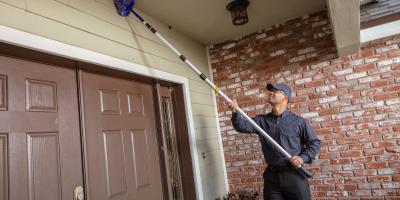Property Manager’s Guide to Bed Bugs

Bedbugs can be a nightmare for property managers. A small infestation can quickly escalate into something much larger and rapidly spread through single or multiple housing units, if not contained. They are a liability that can harm tenant trust and lead to negative reviews and expensive treatment. With meticulous hygiene planning, you can avoid the pitfalls and save yourself a lot of trouble.
Why Property Managers Should Stay Vigilant
Unlike seasonal pests, bed bugs are active year-round. They travel easily between units through walls, ceilings, and plumbing, and can enter properties on tenants, guests, or secondhand furniture. A single pest can have far-reaching consequences unless dealt with early on.
Waiting for a tenant to complain often means the infestation is already well underway, and that’s when the situation can become more expensive and disruptive. Staying alert and maintaining buildings can help, but bed bugs are tiny and easy to miss. Once hatched, they will irritate and bite until they’re stopped.
You and your staff need to know what to look for and where to check for signs to prevent a full outbreak and keep your tenants happy. Tight bed bug control will also protect your property and avoid the wider impact of an unmanaged infestation.
How to Spot the Early Signs
You don’t need to be a pest expert to keep bed bugs under control, but you do need to recognize when something might be wrong. Bed bugs are skilled at hiding and can go unnoticed for days. Regular visual inspections are essential, especially during tenant handovers, renovations, or routine maintenance, when your property is vulnerable to invasion.
Training your staff on the early signs is a good starting point; after all, they are your eyes and ears. Maintenance crews might spot issues during repairs, and cleaning staff might notice unusual marks or activity in shared spaces. Even front desk or leasing staff might hear complaints that point to a pest issue. When they’re confident in what to flag, you increase your chances of catching bed bugs.
While you don’t need to solve every pest issue alone, you do need to know when to take action. With bed bugs, time matters. The longer you wait, the harder they are to manage. Professional pest extermination might be the only option.
Build a Plan That Works for Your Team
Haphazard inspections can lead to missed warning signs. That’s why a clear, structured process makes sense. A simple checklist on what to look for can help keep inspections consistent across the properties you manage.
Before drawing up a list, consider the layout of each site, the type of furniture, and the number of units. Once you build a list that works for you, ensure it’s shared across your team. Staff need to follow the same protocol to ensure thorough inspections and that nothing is overlooked.
A set routine like this will help to identify patterns, track repeat problem areas, and catch emerging infestations. It also makes onboarding new staff easier by giving them a clear framework from day one.
Our downloadable guide includes a checklist covering areas where bed bugs often hide and what precautions can help. But it’s not meant to be a one-size-fits-all solution. Every property is different, and your checklist should reflect that.
Want to See the Full Checklist?
Our pest control experts are producing a PDF guide that is specifically designed for property managers. It includes:
- Information on how to identify bed bugs, from eggs to adults
- Guidance on where bed bugs hide and how they spread
- Prevention tips and best practices for you and your staff
This isn’t a technical manual; it’s a practical tool to help organize your daily management routine. Whether you oversee apartments, dormitories, or short-term rentals, the information in the guide will help you build robust systems and reduce the risk of bed bugs.
Keep an eye on our future content for our bed bug guide for property managers. JP Pest Services is here to help you manage the risks and provide the tools you need for efficient bed bug pest control.



